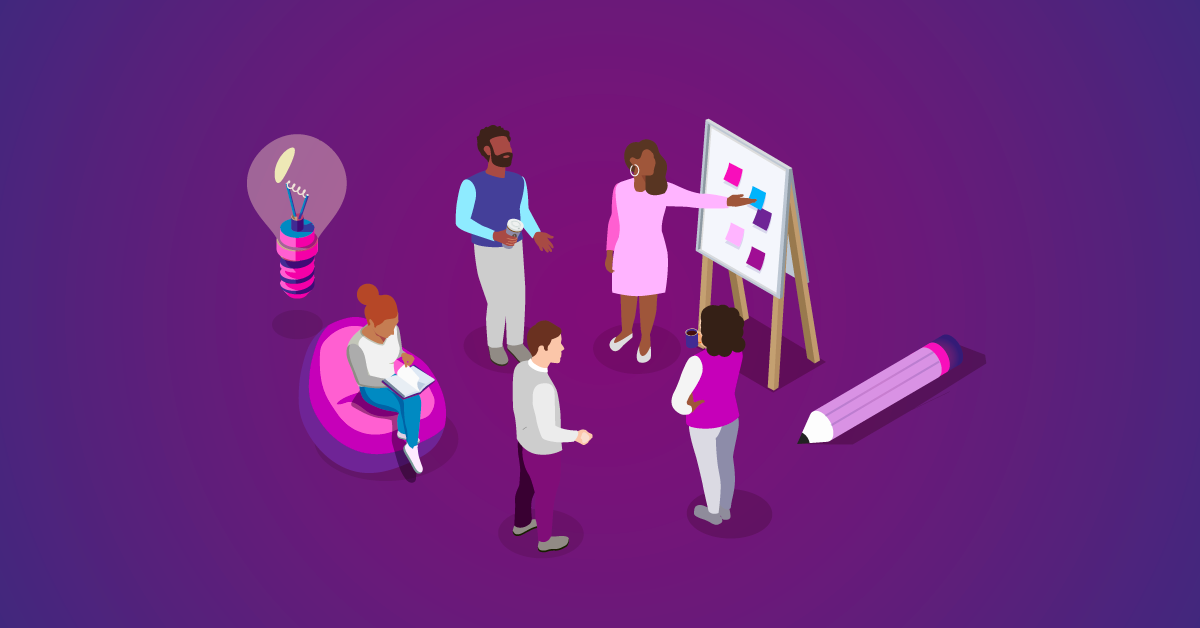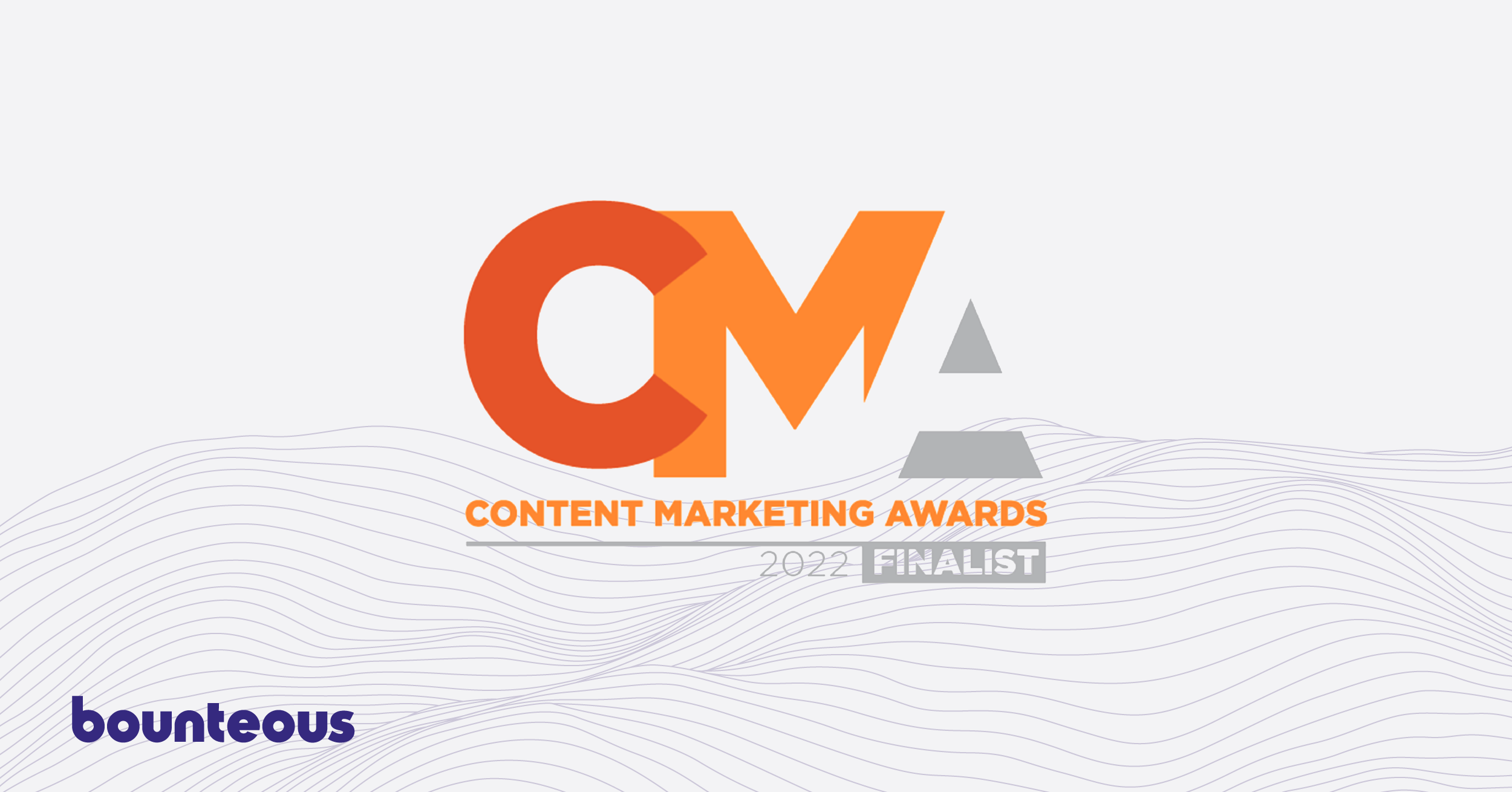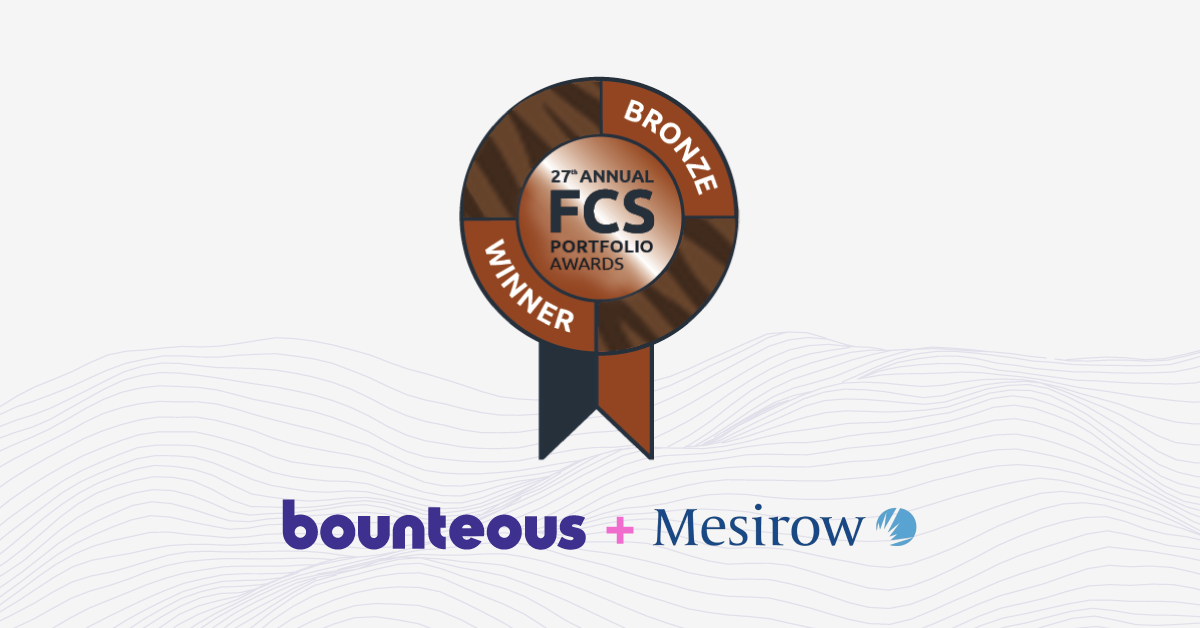Design Thinking in Action: The Four Pillars of Effective Ideation
Everyone loves Design Thinking. It is by far the most effective method for solving complex design challenges and has rapidly become the primary engine of innovation for the world's most iconic and profitable brands.
At Bounteous, Design Thinking has become an integral part of our co-innovation offering, which we use to help improve our clients’ competitiveness by co-creating innovative brand experiences and boosting their digital maturity.
With the level of success Design Thinking has demonstrated, it's tempting to assume that simply following the method will guarantee results. But as always, the devil is in the details, and we have discovered a few basic principles and practices that are helping us get the most out of Design Thinking.
In this article, I'll unpack some of those learnings and focus more specifically on the ideation phase of Design Thinking.
Why Design Thinking Works So Well
First off, a quick refresher. By definition, Design Thinking is an iterative process in which we seek to understand the user, challenge assumptions, and redefine problems in an attempt to identify alternative strategies and solutions that might not be apparent with our initial level of understanding.
But why is that process so successful?
The most important reason is that it overcomes natural human biases and entrenched behaviors that prevent people from being truly innovative. Design Thinking breaks these biases in two ways.
First, it uses various techniques adapted from ethnography and sociology to immerse the design team in the needs and motivations of the intended user. Second, it relies on a collaborative ideation process that brings together small groups of experts across disciplines and lets them collectively see past the limits of their individual knowledge domains to come up with innovative solutions.
My personal hunch is that there is also a deeper, simpler reason why Design Thinking works so well—it's how we evolved as a species. Early humans lived in extended families or small tribes.
We self-organized to face new challenges and we were jointly responsible for outcomes. Those who developed a natural talent and collaborated well to find good solutions made their tribe more successful. They passed on those genes, we are their descendants, and so we're all Design Thinkers at heart.
Fine-Tuning the Ideation Method
We have over 100 designers at Bounteous, and collectively we have led many hundreds of ideation cycles using various briefs, formats, and tools. Over time, we have observed that there are four key ingredients to a successful ideation process: clarity of purpose, good creative stewardship, "innovation-grade" talent, and effective ideation methods. In our experience, collaborative ideation has the best chance of succeeding when all of these ingredients are present.
Missing just one often results in design efforts that are misguided (lacking purpose), unfocused (lacking creative stewardship), uninspiring (lacking appropriate talent), or chaotic (lacking effective methods).
Clarity of Purpose: Making Things People Want
It shouldn't come as a surprise that effective design solutions require clear goals that are shared by all stakeholders and members of the design team. But in the specific context of the ideation process, clarity of purpose has a slightly different meaning.
First, it means refining and distilling any existing customer research into a user story. A user story is a singular, customer-centric statement of need that everyone on the team can easily internalize and use as a North Star for ideation. User stories usually take the following form:
As a type of customer, I want to do something so that I can achieve a goal.
For example, here's a representative user story that an online brokerage company might use to brief a design team based on insights about their customers:
As a newbie investor, I want education that fits my investment goals, temperament, and learning style so that I can start to plan for a house purchase.
In addition to immersing the team in the needs of the intended customer, user stories prevent a common "ideation killer" that I like to call the Container Fallacy. This happens when the design team is given a brief that dictates the container of the experience (e.g. "build an app that does x") rather than focusing on its purpose ("design a way for people to accomplish x").
In a brilliant UX talk dating back to 2005, a designer named Marc Rettig gave his audience one minute to design "a better vase." Then he gave them another minute to design "a better way to enjoy flowers."
The first exercise resulted, predictably, in endless variations of concave shapes. The second one unleashed the audience's creativity because it focused on the purpose vs. the container (literally in this case).
The other major requirement for clear purpose is clear business goals. In my experience, the Container Fallacy often makes its way into business goals as well, most often through tactical performance measures that dictate a specific type of experience.
For example, "bounce rate" presupposes a web experience, so it would be preferable to use a higher-order engagement goal that works across web, app, or any other type of digital experience.
At Bounteous, we use the Objectives and Key Results (OKR) framework whenever possible to frame business objectives for the design solution and allow the team to fine-tune the key results based on the specific type of experience they are designing.
Creative Stewardship: Balancing Facilitation With Leadership
Ideation workshops often fail to converge on a shared vision because the facilitator is either a strong-willed creative leader who overpowers the rest of the team (think Don Draper) or at the other extreme, someone who tries to faithfully transcribe every individual's contribution without building synergies between ideas.
The most effective facilitators are people who can walk that very fine line and become active stewards of the ideation process, subtly steering the team and helping to coalesce individual ideas into a viable design solution.
In my experience, people like that tend to do a few things very well. They are able to create psychological safety within the team, often by showing their own vulnerability and proving by example that this is a safe place to share ideas. They tend to be servant leaders who excel at helping others become better leaders. And they master the art of affinity mapping, consolidating similar or complementary ideas into higher-level themes without diluting their power.
Innovation-Grade Talent: Empowering Y-Shaped People
Innovating through a collaborative design process requires a new kind of talent, especially in the realm of digital experiences where there is constant pressure to adapt to rapidly evolving customer expectations, technologies, market dynamics, and regulatory environments.
I like to call this kind of talent Y-shaped people (it's a kind of nerdy homage to the concept of T-shaped people popularized by the design consultancy IDEO).
Y-shaped people have a strong core skill set, represented by the vertical stroke of the Y: they are masters of their specific craft and act as mentors to more junior team members.
They also have two critical sets of soft skills, represented by the "wings" of the Y. One of those wings is the ability to empathize deeply with the needs of others, combined with a driving curiosity that pushes them to seek new and interesting solutions for those needs. The other wing is an ability for fluid thinking and real-time collaboration that allows them to quickly assimilate, pivot, and build on others' ideas to make them better.
A recent example of Y-shaped people in action is the groundbreaking Treat Town™experience that we co-innovated with Mars-Wrigley to help save Halloween in the midst of a global pandemic. This would not have been possible without a stellar team of empathetic, collaborative experts working together across the two organizations and ideating towards a shared vision.
Empathy ensured that the team was working towards a design solution that fully addressed the needs and motivations of our users, while fluid thinking and collaboration across disciplines allowed us to iterate continuously on the solution and balance usability, feasibility, and business value.
Effective Ideation Methods: User Story Mapping
The three ingredients we just looked at—clear purpose, creative stewardship, and Y-shaped talent—all need to come together in a carefully prepared and orchestrated series of workshops that produce a viable design solution.
One of the workshop methods we have come to value most at Bounteous is an adaptation of User Story Mapping, which was invented by Agile coach, author, and product design evangelist Jeff Patton.
Story mapping brings together a small, cross-disciplinary team of experts—strategists, designers, developers, SMEs, and business stakeholders—who can collectively assess the usability, feasibility, and business value of the ideas they are generating. The team's goal is to build a story map, which is a comprehensive, customer-centric visual representation of an experience that addresses the needs expressed in the user story described above.
The story map has three levels of representation that emerge from the bottom up through a series of guided exercises that include individual ideation, consolidation, decomposition, and prioritization.
The top-level or "backbone" represents the emerging high-level themes. The middle level describes the steps or activities the user goes through to accomplish their goals. And the bottom level decomposes those activities into specific product features that will need to be designed and built.
We have made a few purposeful modifications to this method to ensure the best possible outcomes, such as creating alignment on the basic interaction dynamics of the experience early on in the workshop, providing the team with creative and technology "building blocks" to stimulate ideation, and scanning the map for ideas that might help or hinder the delivery of an inclusive experience.
Turning Good Ideas Into Reality
This might sound a bit reductionist, but I believe there are really only three ways to ideate.
You can find a genius and surround them with a horde of minions to execute. That's the Steve Jobs approach.
You can brief a dozen teams, make them compete, and pick the "best" idea. That's the traditional creative agency approach.
Or you can use a collaborative ideation process that nurtures the right kind of talent, gives them a clear purpose, unleashes their collective expertise through good creative stewardship, and uses proven workshop methods like Story Mapping to build towards a viable design solution.
We think that's the most effective approach for our clients. It lets us reliably turn good ideas into reality, while also helping our clients boost their own digital maturity in a constantly evolving landscape.



